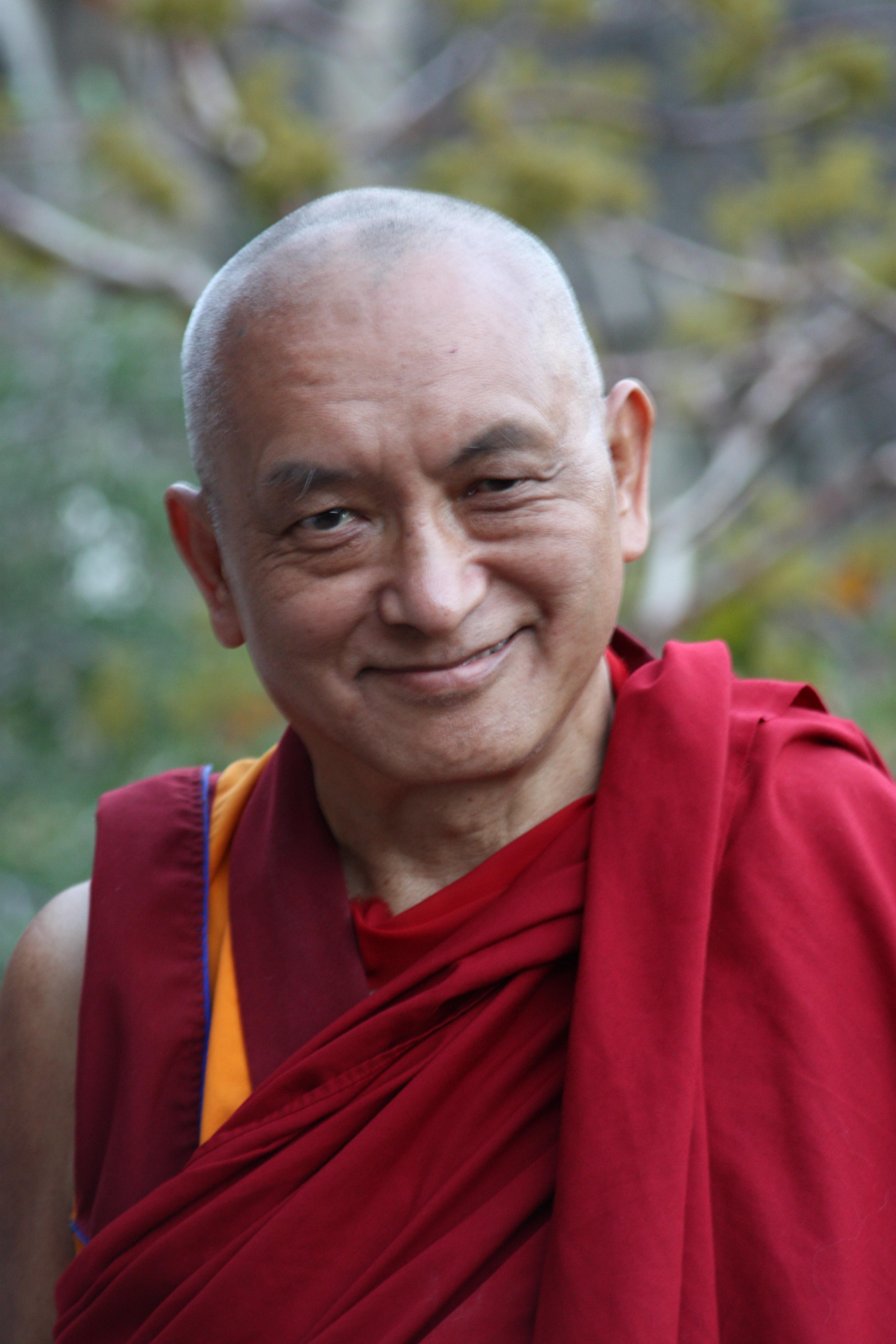Ven. Sarah: I told Rinpoche the story of one student who was helping fill the water bowls. She had read Rinpoche’s Ultimate Healing book. When she went for a routine biopsy, they stuck the needle in the wrong place, it hit a nerve and she experienced agonizing pain through her whole body. Because she had read the book, she was able to remember Rinpoche’s advice about using one’s own pain to take on the suffering of others. So she thought to herself very deeply that she was experiencing this pain for all other sentient beings. She said that because she did this she was able to bear the pain, which otherwise was so agonizing that she wouldn’t have been able to bear it. This student told me the story when she attended an Ultimate Healing course at the Land of Medicine Buddha center. It was clear that the experience had deeply affected her and she kept the book with her and cherished it. Rinpoche was so happy to hear this, very pleased. He said:
Rinpoche: That’s fantastic she was able to do that. It’s true when you have that attitude using your own suffering to take on the pain of others, then definitely it helps to bear the pain and make it less. The more you can think that you are experiencing the suffering for others, the better it is, very powerful. Even just the moment that intention arises to use the pain to take on the suffering for others there is an effect, it changes things. Even before you do the actual meditation. Just that intention arising.
Sometimes when I have pain in my eyes I try to think that I am taking on the suffering of other beings and experiencing it for them. Then I noticed that it helps, the pain decreases. When you have a strong enough intention, it can not only make the pain decrease but even stop the pain. But of course that shouldn’t be the motivation. The motivation shouldn’t be to have the thought in order to stop the pain, it should be a genuine feeling that you want to experience the pain for others. I’m not sure what my motivation was, but you should try to generate a pure motivation without any thought of wanting the pain to decrease. Then it becomes very useful. If the pain continues then you can use it to develop the mind in compassion and bodhicitta. So if you are practising thought transformation, this is the most useful thing because you have the chance to train the mind. If the pain ceases then you lose the opportunity, you lose the benefit of having the pain.
Ven. Sarah: I told Rinpoche that the student asked me a question about taking on suffering. She said that when she experienced her own pain it was so unbearable that she couldn’t imagine how she could take on the suffering of all beings. But when she asked me she also answered the question because she mentioned something about joy. I said I thought that if the mind was prepared well, then there is so much joy to be able to actually take on the suffering of other beings that it is not experienced as suffering anymore; the greater the suffering, the greater the experience of joy. I asked Rinpoche if that is correct. He said:
Rinpoche: Yes, it depends how much compassion is in the mind. It depends how much that person has compassion. The more compassion is in the mind, the more pain they are able to bear for others. For example, as Shantideva mentions, normally the hell realm suffering is the greatest suffering that exists so nobody wants that, but the bodhisattva who has developed such great compassion is so happy to bear the hell realm suffering for others. For him or her it is such great happiness and bliss to experience that for others. This is because there is so much compassion in the mind. The more compassion, the easier to bear the sufferings of others.
It is like the mother who is so happy to take on the suffering of her child. The mother sees her beloved son or daughter as the most precious thing in the world, the most precious one. And the child sees the mother as the most kind one. Because the mother sees her child as so precious, she is so happy to take on the sufferings of that child. It is very easy. And the more the child sees the mother as kind, the easier to bear suffering for her. So it depends on how much compassion we have and how much we are able to see others as precious and kind. The more we can see others as precious and kind, the more the compassion and the thought of loving-kindness, then the more we can bear suffering for others.
So please say “Thank you” to her. Tell her I would like to thank her for having that thought. By remembering to do the practice when she had pain, not only did it help her to bear the pain, but even if she had died, because she had this thought in her mind of bearing the pain for other sentient beings, she would have had the best way of dying. So tell her I am very happy and I will write a card for her. I will send her a card as big as this world.































